Chinese characters are both loved and dreaded at the same time. Some people start learning Chinese mostly because of the beautiful characters, but the fact that you need to learn thousands of them to become literate in Chinese can be daunting as well.
The challenge also shifts in nature over time. As a beginner, you might struggle with stroke order, basic components and the structure of characters, but this problem grows less serious as you learn more.
I have studied Chinese for thirteen years now, and I can tell you that I still spend time learning characters, even if I know almost all the components and stroke order is automatic. The challenge is there, but it’s not the same as it was when I started learning.
I know maybe 5,000 characters passively, and I seldom encounter characters I don’t know, at least when reading ordinary text in a modern context. The problem for me, and most other advanced learners (and indeed native speakers), is that when writing, we mix characters up, choose the wrong sound component or just plain forget how to even start (extra embarrassing as a teacher).
In this article, I will introduce and recommend a resource for helping you make sense of Chinese characters that I have been using for years, but before I do that, I want to provide some background. However, feel free to navigate this article as you see fit. Here’s what I will discuss:
- What you need to learn Chinese characters
- Introduction of Outlier Dictionary of Chinese Characters
- Why the Outlier Dictionary is awesome
- Outlier Linguistics Dictionary contents
- Outlier Linguistics Dictionary Essentials edition
- Outlier Linguistics Dictionary expert edition
- Room for improvement
- More products from Outlier Linguistics
- Interview with Ash Henson from Outlier Linguistics
What you need to learn Chinese characters
Regardless if you’re a beginner or an advanced learner, I think there are two things you need to do to learn Chinese characters successfully, provided you’re not willing to spend a few thousand hours on mindless handwriting practice.
- You need to understand Chinese characters
- You need to do constant but low-intensity reviewing
Let me explain these briefly. The first item should be obvious to anyone who knows anything about cognitive psychology and learning: Understanding makes learning easier.
Studying something you don’t understand is hard because you’re resigned to learning superficial facts, without having access to the deeper structure that leads to those superficial forms. It’s like learning the names of muscles without having a skeleton to attach them to. The more things make sense, the easier they are to learn and remember.
The second thing you need to learn Chinese characters is constant but low-intensity effort. This is straightforward too, but sometimes misunderstood by new learners. Learning Chinese characters is not hard because it requires a herculean effort over a short period, it’s hard because it requires low-intensity studying and reviewing over a long time. I believe that the best way to learn and maintain characters long-term is to use spaced repetition apps specifically aimed at Chinese characters, but since I have already covered this in another article, I will move on to understanding characters.
Review: Outlier Linguistics Dictionary of Chinese Characters
 Today, we’re going to look closer at the Outlier Linguistics Dictionary of Chinese Characters, which is the best available resource for finding reliable and clear information about Chinese characters as a student.
Today, we’re going to look closer at the Outlier Linguistics Dictionary of Chinese Characters, which is the best available resource for finding reliable and clear information about Chinese characters as a student.
It is a once-off investment that will pay off handsomely over the entirety of your Chinese-learning experience. With the discount code “hacking25” (without quotation marks), you’ll get 25% off anything from Outlier Linguistics.
If you find something interesting on their site, please use the links in this article, as that also helps support Hacking Chinese and enables me to keep writing free articles (there are currently more than 500 of them).
Outlier Linguistic Dictionary: Your guide to understanding Chinese characters
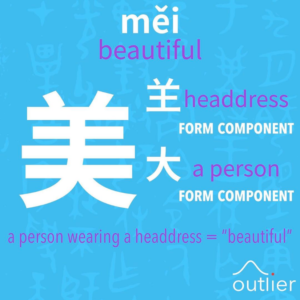 As I said in the introduction, the Chinese writing system is much more complex than people who haven’t learnt it often think. The amount of information you need to internalise to make sense of it is huge.
As I said in the introduction, the Chinese writing system is much more complex than people who haven’t learnt it often think. The amount of information you need to internalise to make sense of it is huge.
And here many students encounter a problem: Out of all the resources available for learning Chinese characters, whom should you trust? Who provides enough information for you to learn the characters, presented in a way that also makes sense and is easy to access?
Most beginners simply rely on what their teachers recommend or what they can find by searching online. This can vary wildly from not even breaking characters down into components, to reasonably good resources talking about sound and meaning in Chinese characters.
If you don’t know what I’m talking about, you should probably check my twin articles about phonetic components, without which you can’t hope to make sense of much when it comes to Chinese characters:
- Phonetic components, part 1: The key to 80% of all Chinese characters
- Phonetic components, part 2: Hacking Chinese characters
I started learning Chinese characters on my own after finding a site called Zhongwen.com, mostly by chance. It’s still there, even if the interface looks like it’s from the 90s. It certainly fails the test of being easy to access and I have since also learnt that some of the information is not reliable. It was better than most, though, because it does at least talk about sound components.
The resources you will find by searching online are often built on open-source dictionary databases, that are adequate for listing basic definitions, but far from enough to understand Chinese characters. The problem with all these resources is that they rely on programmatically retrieved information, and characters are split into components by a computer with no understanding of what it’s doing.
Enter: The Outlier Linguistic Dictionary of Chinese Characters
 This is why the Outlier Linguistics Dictionary of Chinese Characters is such an essential addition to the range of tools available for language learners and teachers.
This is why the Outlier Linguistics Dictionary of Chinese Characters is such an essential addition to the range of tools available for language learners and teachers.
It solves one of the problems with learning characters, namely that of finding reliable information that is up-to-date with current research on Chinese characters, and is easily accessible in English through a modern interface. No other resource can claim this, which is why the dictionary was so warmly welcomed by experts, teachers and students alike.
Here are quotes from three people I respect a lot when it comes to Chinese language teaching:
Every so often a really good resource comes along. It’s The Outlier Linguistics Dictionary of Chinese Characters.
– Prof. Victor Mair, University of Pennsylvania
I feel like I have a virtual 1-on-1 Chinese teacher, giving me a better sense of how the writing system functions.
– Dr. David Moser, Yenching Academy, Peking University
They have put a lot of thought into how foreigners learn Chinese, and they’ve come up with a better way to learn characters.
– John Pasden, AllSet Learning & Mandarin Companion
You might think that any service can find endorsements like these (quoted from their website), but this is a rare case of there being an absence being filled by a new service, one that has been eagerly anticipated for years. While I don’t think Outlier Linguistics offer a new way of learning as such, they do offer uniquely high-quality resources that certainly aren’t easily accessible elsewhere. In essence, they take current academic research into Chinese characters and turn it into a digestible format students can chew.
Here is how Outlier analyses characters:
Review: Outlier Linguistics Dictionary of Chinese Characters: Contents
So, what is the Outlier Linguistics Dictionary of Chinese Characters?
What does it contain? What features does it have? What makes it so awesome?
One question at a time!
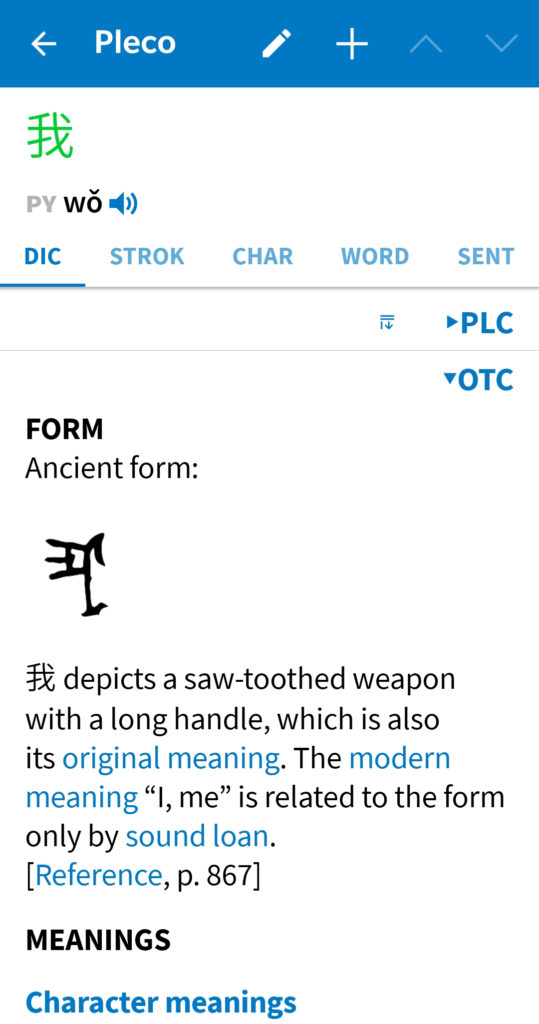 The Outlier Linguistics Dictionary of Chinese Characters is a character dictionary available as a paid add-on to Pleco, a free dictionary app for iOS and Android. If you don’t know about Pleco, you should install it immediately, even if you’re not interested in the Outlier Linguistics Dictionary of Chinese Characters.
The Outlier Linguistics Dictionary of Chinese Characters is a character dictionary available as a paid add-on to Pleco, a free dictionary app for iOS and Android. If you don’t know about Pleco, you should install it immediately, even if you’re not interested in the Outlier Linguistics Dictionary of Chinese Characters.
It’s a clean, modern dictionary app that more or less everybody agrees is the best available. It also has a myriad of other features and add-ons, but that’s the topic of another review.
The point here is that the Outlier Linguistics Dictionary of Chinese Characters is available through Pleco, so you don’t need to install an extra app for it and you don’t need to rely on a poorly developed extra app.
The Outlier Linguistics Dictionary of Chinese Characters contains detailed analyses of Chinese characters, including the most basic information about functional components, explaining why each character looks the way it does and what functions the components have.
Each entry is manually created by the Outlier team, with deep knowledge and up-to-date information about Chinese characters. No automatically generated breakdowns based on superficial forms!
There are two versions of the dictionary:
 The essentials edition ($29.99, save $7.5 by using the discount code “hacking25”) contains the most basic information about functional components and the origin of characters. At the moment of writing, it contains more than 2,700 characters. Since this dictionary is constantly updated, this number will increase in future, and as long as you have bought the dictionary, you will automatically get access to future updates.
The essentials edition ($29.99, save $7.5 by using the discount code “hacking25”) contains the most basic information about functional components and the origin of characters. At the moment of writing, it contains more than 2,700 characters. Since this dictionary is constantly updated, this number will increase in future, and as long as you have bought the dictionary, you will automatically get access to future updates.- The expert edition ($59.99, save $15 by using the discount code “hacking25”)
 contains, as the name implies, more in-depth knowledge that might not be strictly necessary to know for beginners but is nevertheless both interesting and useful for those with a deeper interest, including teachers who need to know a bit more than they teach their students. At the moment of writing, there are 135 entries, but this number is also set to rise steadily over time.
contains, as the name implies, more in-depth knowledge that might not be strictly necessary to know for beginners but is nevertheless both interesting and useful for those with a deeper interest, including teachers who need to know a bit more than they teach their students. At the moment of writing, there are 135 entries, but this number is also set to rise steadily over time.
Product information and prices above are as listed in August 2020.
These dictionaries are one-time purchases, not subscriptions, so if you spend the next three years learning Chinese (but hopefully longer), the essentials edition will cost you only roughly $0.02/day.
I have used the dictionary on a nearly daily basis for many years, so I feel qualified to talk about using it as both a student and a teacher, so let’s have a closer look at what the dictionary looks like and what it has to offer. You can check a live demo on Outlier Linguistics’ website (just click “Demo” in the top navigation bar), which shows you examples without the need to buy or install anything.
A detailed look at the Outlier Linguistics Dictionary of Chinese Characters
According to the official website, the Essentials Edition contains the following:
- 4000+ characters (2000 so far + regular updates)
- Simplified and Traditional characters
- Detailed explanation for every character
- Stroke order for all 4000 characters
- Meaning tree for every character: how are all the meanings related to each other?
- Ancient forms for all semantic components
But what does this mean? What makes this worth paying for, when so much of this can, at least as it seems at first, be found online for free?
Let’s look at a typical entry, here for 长 (長):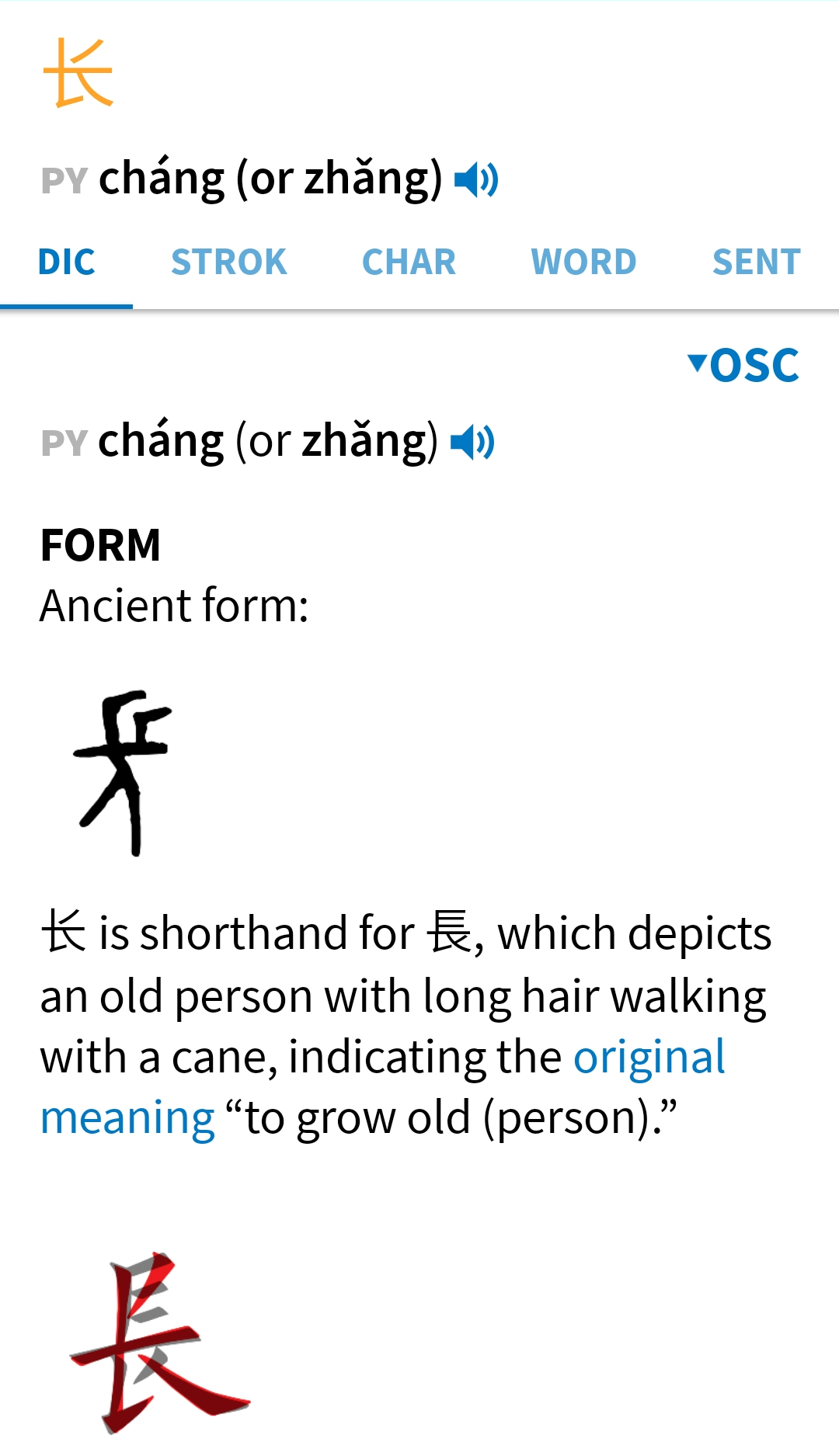
While this might look basic, the fact that an expert in Chinese characters wrote it manually matters a lot. It’s not a one-line basic definition, it’s an actual explanation with cited references (although not shown in the image). I also love the fact that the simplification process is highlighted here, saying that 长 is shorthand for 長. This might not be very hard to see in some cases, but I learnt a lot from such entries. I only made sense of simplified 买 (買) after seeing this:
One aspect that I particularly like is the explanations of derived meaning. In most dictionaries, you will simply have all meanings associated with a character listed in a row, maybe sorted by importance, maybe not. In the Outlier Linguistics Dictionary of Chinese Characters, the derivation is laid out in a clear and easy-to-understand order. First, you get the original meaning of the character, then each derived meaning is shown with various kinds of arrows. Here is 长 (長) again:
For native speakers and advanced learners, this might be obvious in many cases, but not always. Forums and question sites focusing on Chinese are filled with questions like “How come that character A means B when it depicts C?” or “Why does character X mean both Y and Z, which seem completely unrelated to me?” Showing the derivation, along with the basic explanation of the character I talked about above, this type of question can almost always be answered by the Outlier Linguistics Dictionary.
How useful is it to learn about character origins and evolution?
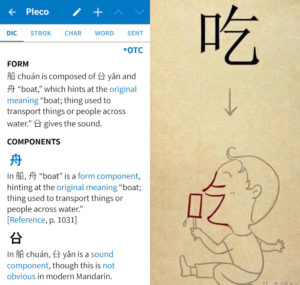 A question that many students ask when it comes to knowledge about characters is how helpful it really is. This is a good question because time spent learning about the origin and evolution of a character doesn’t necessarily have a direct, positive impact on your ability to read and write characters. It probably does have a long-term impact, though.
A question that many students ask when it comes to knowledge about characters is how helpful it really is. This is a good question because time spent learning about the origin and evolution of a character doesn’t necessarily have a direct, positive impact on your ability to read and write characters. It probably does have a long-term impact, though.
In a recent article, I outlined five levels of understanding, summarised as follows:
- Inventing pictures that disregard the composition and structure of characters
- Creating stories and associations that obscure functional components
- Using superficial pictures while being aware of functional components
- Using superficial pictures and encoding functional components
- Etymologically correct mnemonics with no shortcuts
Many students (and, perish the thought, teachers) stay on level one, which is extremely bad in the long run. By disregarding the actual components and structure of the characters, you might make it easier to learn one single character, but you can not use anything of what you learnt to learn more characters later, and you didn’t learn anything about how Chinese characters actually work.
Level two is also a common level of understanding for many students, but this is less problematic. The problem is that if you’re not aware of how functional components work, you can create mnemonics that hinder you from understanding how characters work. This is particularly bad in methods that focus on character meaning only, disregarding sound completely.
I suggest that students strive to reach level 3 or 4, depending on their interest in Chinese characters. To do this, you need reliable information about how characters work and a dictionary that tells you what the functional components are. This is what the Outlier Linguistics Dictionary Essentials Edition is about.
Level 5 is overkill for almost anyone and might be detrimental to learning. I think many believe that experts like the guys at Outlier don’t like creative mnemonics that wander far from the real etymology of the characters, but as Ash says in the interview further down, this is not true.
But back to the dictionary. If everything you need is in the essentials edition, then what is the expert edition good for?
A closer look at the expert edition
The expert edition contains everything the essentials edition does, of course, and beyond that, it adds “extensive information about the origin, evolution, and other historical information for every character”. Note that this is a work in progress, and while there are many entries in the Essentials edition, there are currently only 135 expert entries. This prioritisation makes sense, of course, as the Essentials edition will benefit many more students to a higher degree.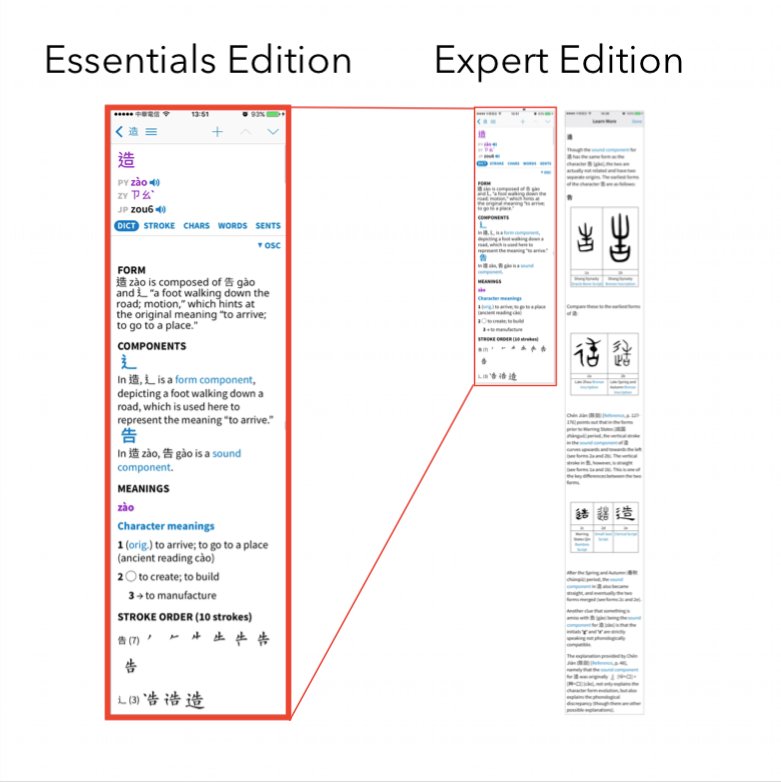
Personally, I find this information interesting, but I don’t think that the average student needs it or that spending too much time digging into the history of characters is a wise choice if you want to see rapid vocabulary growth. Sure, for those of us who have been learning for a while or who teach the language, it’s a great resource, but it’s not necessary for the average student.
Room for improvement
While I believe that the Outlier Linguistics Dictionary of Chinese Characters is truly indispensable for students and teachers who care about Chinese characters, there’s always room for improvement.
 The most obvious one is that this is a work in progress. While 2,700 characters in the Essentials edition is a lot and will cover the needs of many students, it remains true that if you’ve learnt Chinese for a while and struggle with rarer characters, there’s a significant risk that the character has yet to be added to the dictionary.
The most obvious one is that this is a work in progress. While 2,700 characters in the Essentials edition is a lot and will cover the needs of many students, it remains true that if you’ve learnt Chinese for a while and struggle with rarer characters, there’s a significant risk that the character has yet to be added to the dictionary.
If you’re a fairly advanced learner and want to look up new characters, likely, they haven’t been added yet, especially if you go beyond the most common 2,000. If you’re after the truly detailed explanations of the expert entries, you need to actively look for entries that have expert info at all.
Fortunately, updates to the dictionary are always made available to all users, so even if you purchase the dictionary today (or indeed a few years ago), you’ll get access to new entries as they are released. If this was a subscription service, that would be a reason to delay, but it’s not a subscription, so the earlier you buy it, the more helpful it will be.
Another drawback as I see it is that the meaning of sound components are not introduced. The idea behind this is solid enough: The meaning of the sound component has nothing to do with the meaning of the character in question, so it’s irrelevant. In cases where it is relevant, such as when a component is both a semantic component and a phonetic component, it is of course explained.
However, when I create mnemonics for easy-to-forget characters, I want to know what all the components mean. Creating mnemonics based on a sound is very hard and not very helpful in remembering how to write the character.
For example, it’s great to know that the sound component of 掛 is 卦, but simply saying that is not enough to create my mnemonic. I need to know what 卦 means to be able to create a good mnemonic for it! Tapping the character gives a pop-up with other Pleco entries for that character, which is a good solution in the meantime.
Other products from Outlier Linguistics
Outlier Linguistics offer a wide range of products for people interested in Chinese or China. I have not tried all these myself, so I can’t vouch for every single one personally, but based on what I have seen and the products that I have reviewed, these guys have done their homework and know what they’re doing. In case they do not, they collaborate with people who do.
The discount code mentioned above, “hacking25”, is valid for everything they offer, and as noted before using my links will help support Hacking Chinese and my effort to make Mandarin easier to learn for all!
Chinese characters and reading (view all products, including bundles, here)- Outlier Chinese Character Masterclass
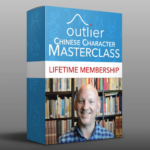
- Outlier Dictionary of Chinese Characters
- Chinese News Bootcamp
- Chinese Cursive Crash Course
- Semantic Components Posters
- Get Speaking Mandarin Course

- Outlier Mandarin Pronunciation & Accent Masterclass
- Intro to Mandarin Pronunciation & Pinyin
- Introduction to Premodern Chinese Literature
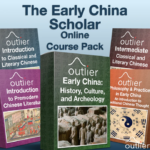
- Chinese News Bootcamp
- Philosophy and Practice in Early China
- Early China: History, Culture, and Archeology
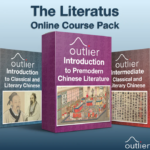 Introduction to Classical/Literary Chinese
Introduction to Classical/Literary Chinese- Intermediate Classical/Literary Chinese
- Advanced Classical/Literary Chinese
If you are learning Japanese, it's good to know that Outlier Linguistics have you covered there as well!
Interview with Ash Henson of Outlier Linguistics
I first met the Outlier Linguistics team in Taipei, probably in 2013 or so, and I have followed their work since then. To give you a better idea of the people, the work and the company that the dictionary is built on, I interviewed Ash Henson, co-founder and CTO. My questions are in bold and his answers are in the regular text below each question.
First things first, please introduce yourself! How did you get into Chinese?
 Hey everyone, I’m Ash from Outlier Linguistics. I always tell people that I didn’t choose Chinese, it chose me. When I was getting my undergraduate degree in engineering, back in (oh, man) 1992, I would buy a language book per week. One week, I bought William McNaughton’s Reading and Writing Chinese.
Hey everyone, I’m Ash from Outlier Linguistics. I always tell people that I didn’t choose Chinese, it chose me. When I was getting my undergraduate degree in engineering, back in (oh, man) 1992, I would buy a language book per week. One week, I bought William McNaughton’s Reading and Writing Chinese.
I had no plan to actually learn it. I thought I might put Chinese characters on a drawing or something (I did a lot of drawing back then — also, don’t do that. It takes many years to get proficient enough at characters such that they would add to rather than detract from your artwork!).
But, after I bought that book, it became a presence in my house. It would call out to me from the bookshelf while I was doing my physics or math homework. One day, I answered the call and the rest is history as they say.
You obviously have a strong interest in Chinese characters. Did that emerge over time or was it love at first sight?
It was love at first sight. I used to watch kung fu movies late at night when I was a kid. They were dubbed into English, but never translated characters when they appeared on the screen. It’s kinda like my version of Silence of the Lambs. In 2005, I left a career in engineering to move to Taiwan to solve the mystery: What are Chinese characters, exactly?
Why did you launch Outlier Linguistics? What would you say that the purpose of the company is?
Our goal is to produce products with excellent content. The type of content we’re going after is the content that we wish was available to us when we started our language learning journeys. Up to now, that has included Chinese characters and pronunciation, but we hope to get more and more general over time.
What exactly is your role at Outlier? What do you like most about your job?
Technically, I’m the CTO, but the Outlier Linguistics Dictionary is my baby. Not including the time I spent learning Chinese well enough to even start on that project, I’ve spent over 7 years full time taking graduate classes, writing papers and reading as well as memorizing tons of material in order to develop the skill set to be able to do what I do.
For the dictionary content, that includes learning paleography (the study of the origin and evolution of the script), historical phonology, i.e., Old Chinese (Chinese of roughly 3000 years ago) and Middle Chinese (roughly 1500 years ago) phonology. That is to say, the study of the sounds of the Chinese language starting 3000 years ago and the evolution of those sounds up to modern Mandarin.
I also do a lot of computer programming. It’s insane how much code is required to do a Chinese dictionary. I don’t know for sure how much Python/C++ code I’ve written for this project, but if I were to print it all out it would be hundreds and hundreds of pages.
What do I like? It’s great doing paleography where you’re thinking in terms of pre-Han dynasty China one minute, and then you’re writing code the next. The switch up is nice. Keeps things fresh.
What can we expect from Outlier in the near future? This year? Next year?
Obviously, we’ll keep putting out dictionary content. Once we finish the Mandarin pronunciation Masterclass, we’ll start on producing a Kanji learning Masterclass, which will be based on our Chinese character learning Masterclass, but adapted to fit the Japanese learning experience.
We’re getting better at making and producing videos, so we’ll also start re-filming some of the videos in the character masterclass as well as coming up with new content.
We’re also trying to put out free videos on Youtube and even doing some stuff on Instagram. We just released another 700+ Essentials entries for our Chinese dictionary, and we’ll put out a few dozen Expert entries in a few weeks. We’re trying to get to the point of releasing a predictable amount of data on a regular basis, but there is so much work that has to be done and we don’t have enough people.
That sounds very interesting; looking forward to all of this! It seems clear that many foreigners learning Chinese appreciate what you’re doing, but what about Chinese people, how do they typically react to your dictionary?
People “on the street” so to speak don’t seem to take it seriously, unless I talk to them about it extensively. From my many discussions about characters with native Chinese speakers, they usually think talking about character form or structure in any way is “complicated” and therefore useless.
But, Chinese speakers in the know tend to show me a lot of respect. When I was in the Teaching Chinese as a Second Language department [editor’s note: the same department I studied at, but not at the same time] for instance, the professors seemed to think I was a hardworking guy, but didn’t really know what I was up to.
When I moved over to the Chinese department, it was totally different. They, for the most part, treat me with respect, because they understand what I’m doing. I was once talking to 季旭昇, basically marvelling at how most people (regardless of native language) don’t really get how characters work. He said, “Ash, most people don’t have seven years to put to it like you have.”
Can you tell us something interesting about Outlier Linguistics that no one outside the company knows?
I had to do some thinking on this, but I think I have a good answer. Most people don’t know or understand the insane amount of code I’ve had to write for this project. Not including blank spaces or comments, there are over 80,000 lines of it.
I used two different scripts to count the lines and compared them. They came up with the same answer. There is some overlap in there, like copying the same function into different files, etc, so if we say 15% of the code is overlap (going on gut feeling here), then that’s still roughly 68,000+ lines of code.
So, why so much coding?
A) Test code – we have to keep up with exactly what files there are for each entry. Before we send data to Pleco (or wherever), we run a series of tests to make sure all the files that should be there are there and that files which shouldn’t be there aren’t there. We also have to make sure that each link in each file works. In the current version of the dictionary, there are 18,671 links within the traditional character files.
There are many character components which have no unicode support (i.e., you can’t display them on a computer without creating a custom font), we use formulas for those, like [漢-氵] which means “What is remaining of 漢 when you get rid of 氵.”
So far, we have 197 of these formulas, and will be adding another 15 to 20 for the next release. The code has to go into each file, collect all of the formulas, and confirm that there is an image file associated with that formula.
The first time we sent data to Pleco, it was a complete mess. We didn’t have any test code and it took weeks to fix the problems. Now that we have test code in place, sending data out is a much smoother process.
B) Writing tools for creating entries – we have three major tools that I’ve written for creating various parts of our entries.
- Raw paleography to dictionary entry – this tool, true to its name, semi-automates the process of converting raw paleographic analyses into the properly formatted files for dictionary data. Some of those files still need to be edited by hand, but the heavy lifting is done by the code.
- Meaning Tree Facilitator – this tool is a graphical user interface that is used to create meaning trees. It automates the process to the point that all I have to think about is the actual logic of the meaning tree and the scope of data to be included. It automagically gathers the data needed to do the analysis and allows me to easily create the tree such that it looks like on the UI what it will look like in the dictionary.
- The Expert Entry Expediter – as you can tell, I like catchy names! This tool automates the vast majority of the process of creating Expert entries. Before the creation of this tool, that process was excruciating. We had to create and name each image file by hand (which includes bibliographic data about the resource that the image came from), then type out the html structure for those images. Now, we can just drag and drop images, give them names, and everything else is automagic. It also allows us very easy access to our research data. We can quickly go through all of the resources we have for a given character by pushing a few buttons, so in this respect, it’s useful for Essentials entries as well.
Why is this important? Because since I do both the coding and the paleography, this has highly impacted our schedule. We put out the first version of our dictionary in February 2017 and since then, I’ve easily done 1.5 years of coding. I was once told in an online discussion that I shouldn’t be doing more than 30 lines of code per day, but that is basically saying if you were to sit down and properly design everything, test it, have other people look over it, etc. that’s how many lines you could produce.
But, as I usually tell people, that kind of thing, imagine trying to write code (and a dictionary) while being chased by a pack of wild dogs. You just don’t have time for that stuff. I write small functions on the fly and test them as I go. We also have reality checks, like when we send data to Pleco. If there are problems with the data, then Pleco’s test code will find them. The first time we sent data to Pleco, it took weeks to correct all of the data problems. Now, if there are any problems, it usually takes an hour or two to fix them, then I’ll update my code to look for whatever problems creeped up.
Another reason I can get away without doing “proper” coding is that these tools aren’t being released to the public. I’m the only one using the code, so I can just fix any problems that come up. Now for those who think we put out new data slowly (and I have to agree that we do), keep this in mind. If I was going by the “proper” way of coding and doing 30 lines per day, that would take 2266 days or 6.2 years for 68,000 lines of code and I did that in roughly 1.5 years.
I’m sure most users have little insight into what it means to keep so much data interlinked and up-to-date, so I’m happy you do it for us!
Let’s go back to character learning, though, which is after all the purpose of all this. Can you explain your stance when it comes to effective mnemonics and accurate character etymology?
This is a funny one. I’ve gotten a lot of flak online for being “against” mnemonics. That couldn’t be further from the truth. I actually learned the majority of the characters I know using a mnemonic system that I learned from Callum Maclay’s long defunct website www.haoyao.com (好藥).
People seem to think that it’s either use mnemonics or understand actual character structure. What we’re saying is this: if you want to use mnemonics, then base them on a correct understanding of character structure.
If you understand how characters actually work, that is to say, how they actually represent sound and meaning (and how they don’t represent sound and meaning), then you can use these sound and meaning patterns to learn new characters more effectively, recall ones that you’ve already learned and to make intelligent guesses about the sounds and meanings of characters you haven’t even learned yet (our customers testify to this! Quite a few of them write to us in rapturous joy talking about how they guessed correctly the sound and meaning of a character they haven’t even learned yet).
So, if you want the best of both worlds, use mnemonics based on a correct understanding of character structure. My issue is with websites or books that claim that they’re telling you the real story of the character when they’re just showing you a memory story.
Yes, I agree that this is indeed tricky. I explored various approaches to this question in a recent article, where the approach you describe here would be level 4 out of 5, I think. Level 5 would be only allowing mnemonics truly in line with actual character origin.
A common and somewhat frivolous question is to ask what one’s favourite character is. Since you spend so much time with characters, I’m curious what your favourite Chinese character is? Use any criteria you want, but please explain your reasoning!
This changes over time. When I was first learning Chinese characters, I really liked 備. I just liked the way it felt when I wrote it. Nowadays, I don’t really have a favorite character per se, but I do have favorite scripts. Like, I really like early 金文 and I really like Warring States scripts, particularly the 楚系文字.
I guess if I had to choose a favorite character, it would be one whose story ties together different areas of research, like semantics, Old Chinese phonology and paleography. Take 學 for example. When you look at the origin of the 冖 at the bottom of ?, you find that paleographers, for purely graphical reasons, are torn between it being 六 or 宀. Early forms of 六 and 宀 are so close, that some paleographers think they’re the same form, but a different character (同形異字). However, there are others who say that there are distinguishing characteristics between the two in most cases.
People who have only seen the modern script generally dramatically underestimate the chaos which is character origin and evolution! So, when I was trying to figure out what was going on with 學 and was specifically looking at the semantics of 六 vs. 宀, most paleographers said that it was 宀 “building” and represented a school.
That immediately brings up a question in my mind: “Did the Shang have a dedicated school house in their communities?” I couldn’t find any evidence of that (though it may exist somewhere).
I then looked at the Old Chinese reconstructions (from Baxter and Sagart 2014): 學 *m-kˤruk (覺部), 六 *k.ruk and wow! As it turns out, 六 makes a very good sound component for 學! I even emailed Dr. Baxter to ask why he constructed a *k.- as a prefix to *ruk in order to make sure he wasn’t doing so based on 學 or 覺 as that would make the argument circular, but it had nothing to do with either.
It may surprise some readers the Old Chinese actually had a series of prefixes and suffixes (though it’s more rigorous to say something like, “Given the evidence, it looks very likely that Old Chinese had a series of prefixes and suffixes.”) Anyway, it’s really exciting when phonological reconstruction can aid in solving a paleographic problem and vice versa.
Finally, let’s dream for a while. If you had a time machine and could visit any period in China for one day, what period would you pick? What would you try to learn?
That’s a difficult question to answer. There are quite a few unsolved paleographical, phonological as well semantic questions that are difficult to answer.
The character for “scroll” 冊, which shows up in oracle bone script, suggests that scrolls made of bamboo strips were in use during the Shang dynasty, but none of them survived. So, I suppose I would pick a peaceful time during the Shang dynasty to meet with the oracle bone scribes and record as much of their speech as possible.
At the same time, I’d try to see as many scrolls as possible. That could possibly clear up several issues:
- What language did the Shang speak and is it related to that of the Zhou?
- Are oracle bone characters representative of the written language of the Shang or was it a special medium?
- Were there actually prefixes, suffixes and infixes in Shang dynasty speech?
- Is the language of xiesheng series the same language as Old Chinese?
Of course, I’d have to study the history of the Shang in more detail before going, so I could answer as many unsolved questions of Shang history as possible.
Interesting! I look forward to your finding a time machine, learning about these things and, hopefully, turning your insights into even better learning aids. Thank you for answering my questions and good luck with Outlier Linguistics in the future!

Tips and tricks for how to learn Chinese directly in your inbox
I've been learning and teaching Chinese for more than a decade. My goal is to help you find a way of learning that works for you. Sign up to my newsletter for a 7-day crash course in how to learn, as well as weekly ideas for how to improve your learning!

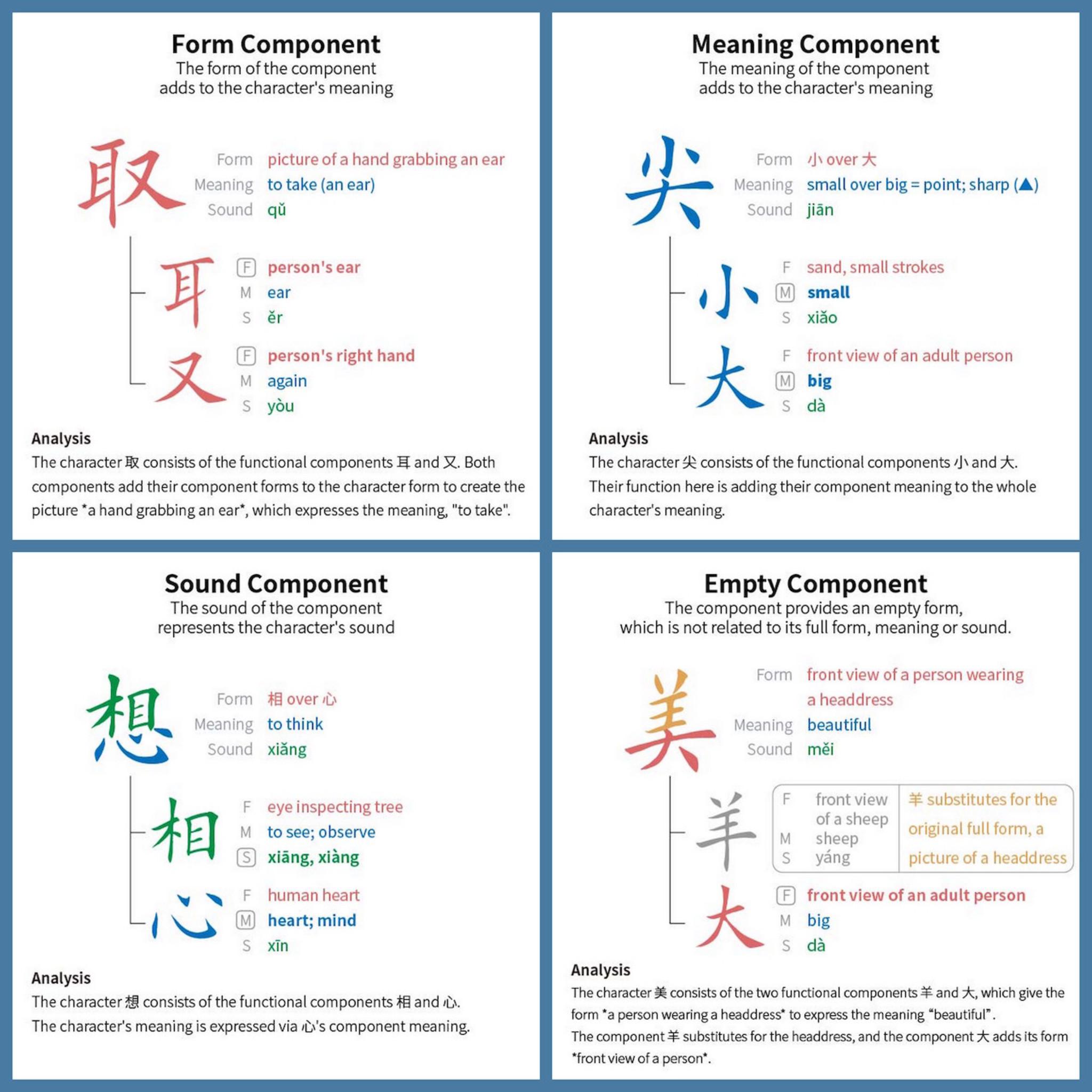
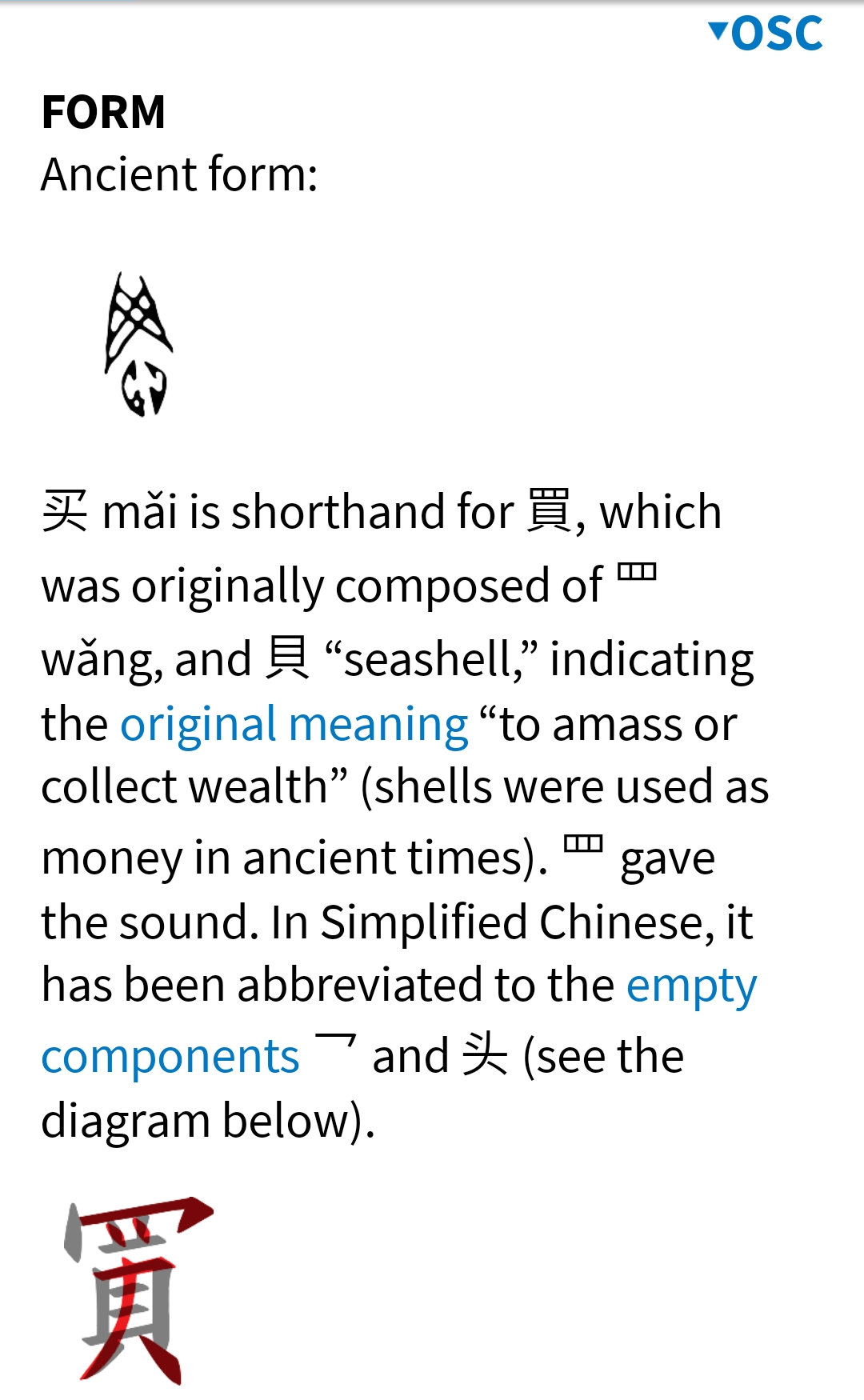
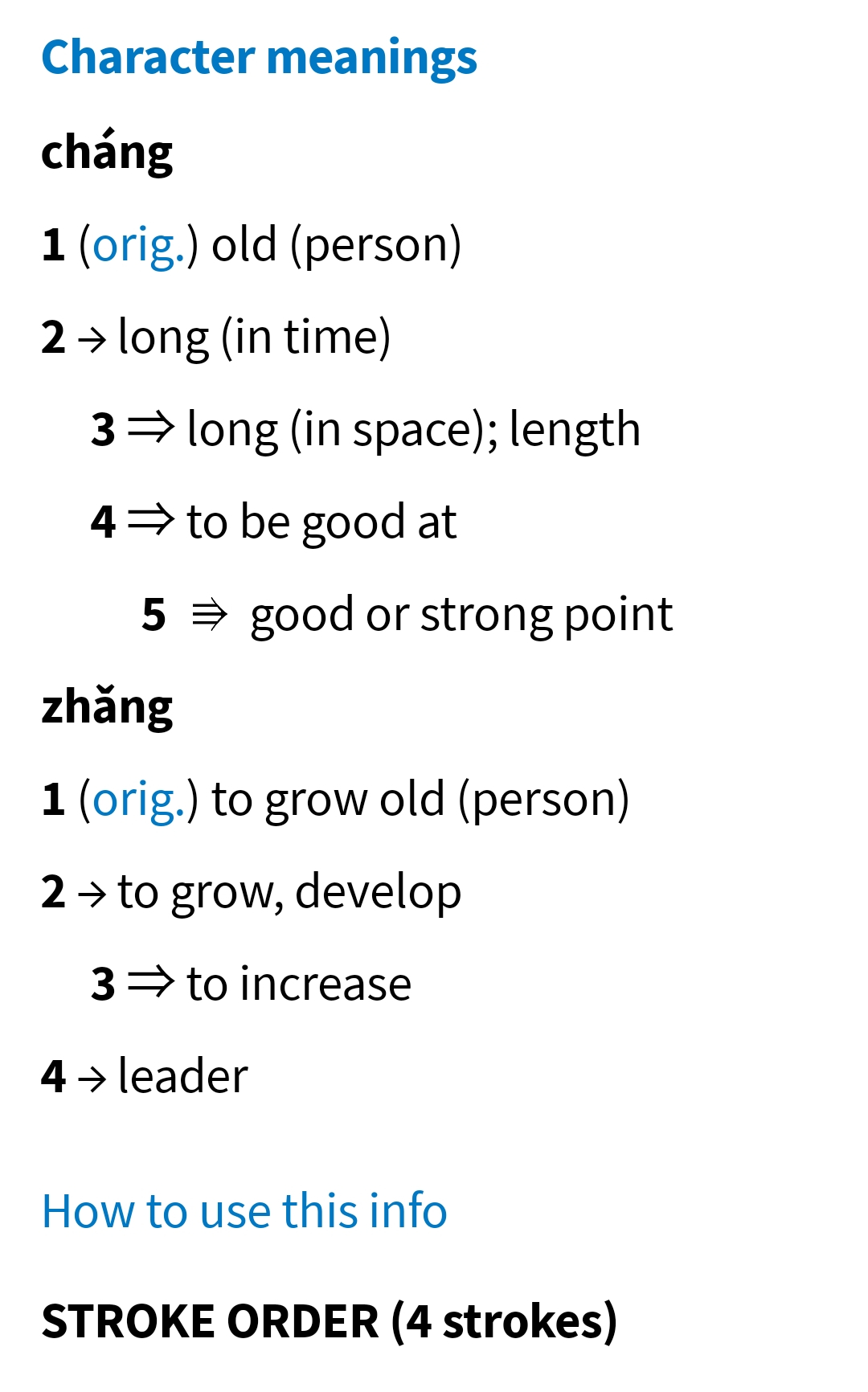
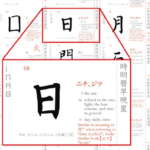
4 comments
Hi Olle thank you for yet another great piece!
I knew i was gonna get it about half way through but sadly after using the link provided and going on their website it would appear as if the product is “sold out” i dont understand how can it be sold out so a bit disappointed but sure it will be “in stock” soon enough.
in addition i have watched one of their course lessons for mastering 汉字 at first glance before i bought it i thought i might buy it but afterwards i must admit im on the fence,the way the course is presented in the free lesson appears to be very monotonic and uses video to hear a guy speaking out a script for the most part kinda felt board and like there must be a better way to it,im writing this comment for two reasons:
1) in hopes they see it and change up something in their delivery.
2) to ask if you are planning on watching that series and perhaps make a review about the course as a whole.
in any case very excited to use their add on for pleco,thanks for sharing and writing as you do!
Hi Dan,
Glad you liked it! I have watched the course, which I mention in the review here, but very briefly. I agree that it’s not the most interesting production, but then again, my own courses are not super fancy either. 🙂 If you check the interview with Ash above, you’ll see that they are working on addressing this:
The biggest drawback as I see it is that most of the course is likely going over the head of beginners. For me personally, I found the course very informative and learnt quite a lot from it, but I’m not the average student.
Went to buy the expert one on Pleco on Android and it’s not available 🙁
That’s weird. It should definitely be available! Maybe just try again or email them?